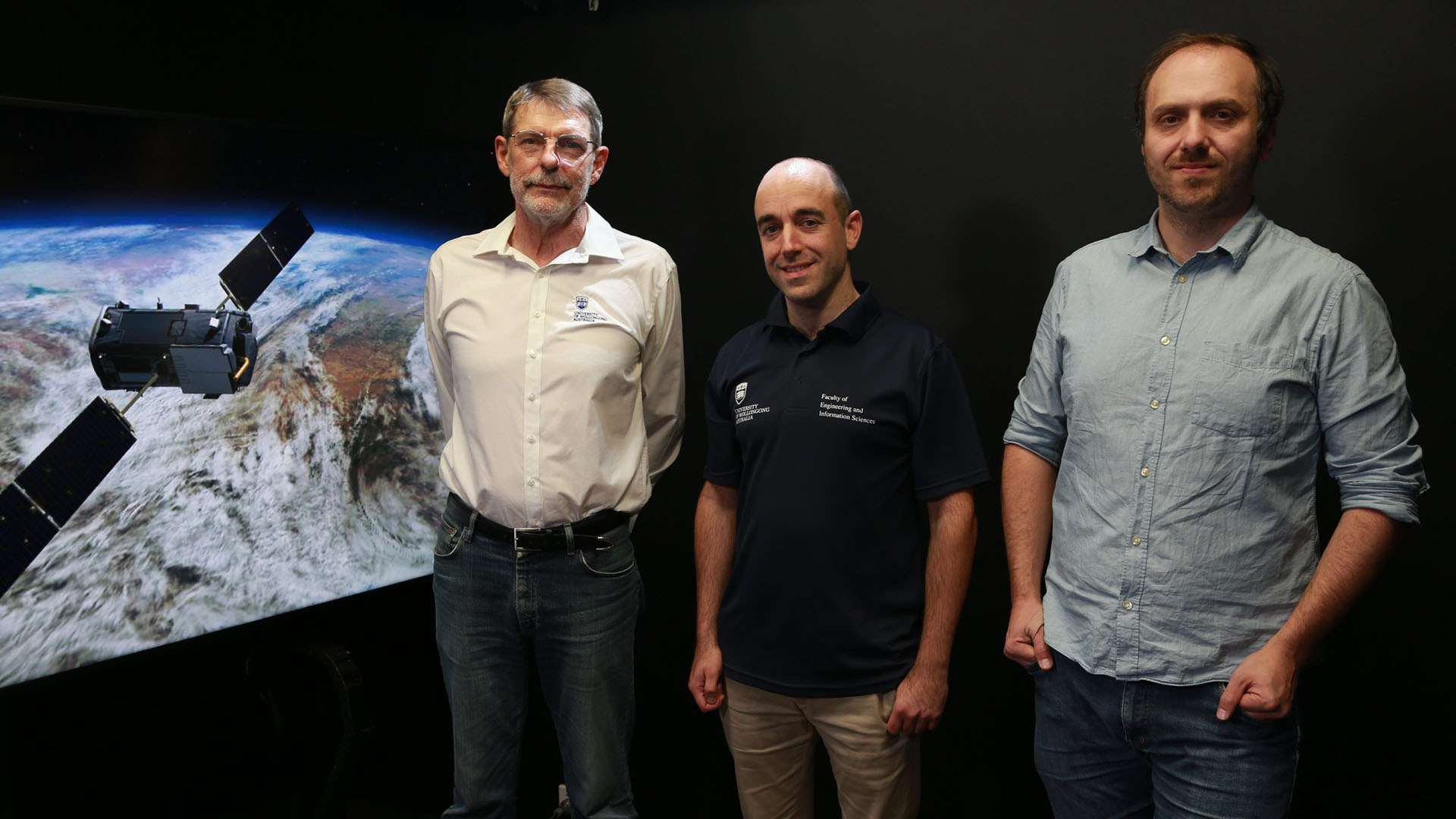August 14, 2023
WOMBAT team wins hat-trick of international awards
Statistical framework allows researchers to estimate CO2 sources and sinks on a global scale
A team of researchers from the University of Wollongong (UOW) has won three awards at the international 2023 Joint Statistical Meetings (JSM), held in Ontario, Canada.
The research team won the Outstanding Statistical Application Award, the Statistics in Physical Engineering Sciences Award (both from the American Statistical Association), and the Mitchell Prize (from the International Society for Bayesian Analysis).
These three awards are among the most prestigious in the field of applied statistics. Winning one award is a huge achievement – winning three is exceptional and a first since the establishment of the most recent award in 2015.
The team won the awards for a paper published in the journal Geoscientific Model Development about WOMBAT (the Wollongong Methodology for Bayesian Assimilation of Trace-gases), a framework they developed for estimating carbon dioxide (CO2) sources and sinks (flux) at Earth’s surface on a global scale.
Understanding flux is critical for efforts to mitigate atmospheric CO2 and global warming. Earlier this year WOMBAT was employed in an international study to track carbon dioxide emissions for more than 100 countries around the world, and has also been featured on the front cover of the magazine Significance.
The team consisted of three statisticians (Associate Professor Andrew Zammit Mangion, Dr Michael Bertolacci, and Distinguished Professor Noel Cressie, all from UOW), three atmospheric chemists (Associate Professor Jenny Fisher, UOW, Dr Ann Stavert, CSIRO, and Professor Matthew Rigby, University of Bristol) and an IT specialist, Dr Yi Cao from UOW.
Lead author Associate Professor Zammit Mangion from UOW’s School of Mathematics and Applied Statistics and co-author Professor Noel Cressie, Director of the Centre for Environmental Informatics at UOW, share an interest in atmospheric trace gases such as carbon dioxide, and years ago began developing a statistical methodology for finding where trace gases come from and where they go to on Earth’s surface.
“WOMBAT was conceived in about 2015 by me and Noel,” Associate Professor Zammit Mangion said.
“We were seeing many impressive techniques for estimating the sources and sinks of a trace gas like carbon dioxide from satellite data, but we wondered whether we could improve the uncertainty quantification aspects associated with these techniques.”
Dr Bertolacci, a senior research fellow in the School of Mathematics and Applied Statistics and joint lead author on the awarded paper, joined the team in 2019, helping design the methodology behind WOMBAT and writing most of the software that powers it.
“When you're trying to estimate something over the whole globe, there is a lot of uncertainty. And what we do that most systems don't do is try and quantify the uncertainty at every level, from the measurement all the way up to our prior scientific understanding of where those sources and sinks should be,” Dr Bertolacci said.
“The most challenging part was that we had to integrate multiple disciplines together … from atmospheric chemistry through to statistics and a bit of geophysics. And once you put all of that together, there's just a lot of complexity that we had to work through.”
An atmospheric scientist from UOW’s School of Earth, Atmospheric and Life Sciences, Associate Professor Fisher’s role in the project was to help the team use the atmospheric model that links the fluxes to the satellite observations.
“The really big problem that everyone's interested in is how much CO2 is coming out of the Earth's surface, whether that's from natural sources or from human activities like burning fossil fuels,” Associate Professor Fisher said.
“It would be great if we could measure those fluxes directly, but what we measure is the concentration of CO2 in the atmosphere. By the time we get to the satellite where we're making that measurement, all of those different sources have mixed, they've travelled really far downwind and we need some way to go from the concentration in the observation back to where that source originally came from. For that we use atmospheric transport models and that's really where my part of the project linked in.”
Professor Noel Cressie said that by using WOMBAT, the researchers were able not only to estimate where the CO2 came from, but also understand the uncertainty of those estimates.
“What really excites me is the ability to use mathematics and statistics to solve really difficult problems. And this problem is very difficult,” Professor Cressie said.
“The satellite sees the carbon dioxide concentration in the atmosphere, but what we want to know is where the carbon is coming from at Earth's surface, so the satellite doesn't measure what we want to know.
“What we need to do is … solve what looks like an almost impossible problem. And WOMBAT has done that. And not only has it given an estimate of whether the trace gas, carbon dioxide, is coming out from anywhere on the Earth's surface, it gives an uncertainty value of that estimate as well. And that really is the key.”
UOW is committed to addressing the United Nations Sustainable Development Goals (SDGs), which provide a shared blueprint to achieve a better and more sustainable future for everyone. The WOMBAT research project addresses SDG 13 Climate Action.
